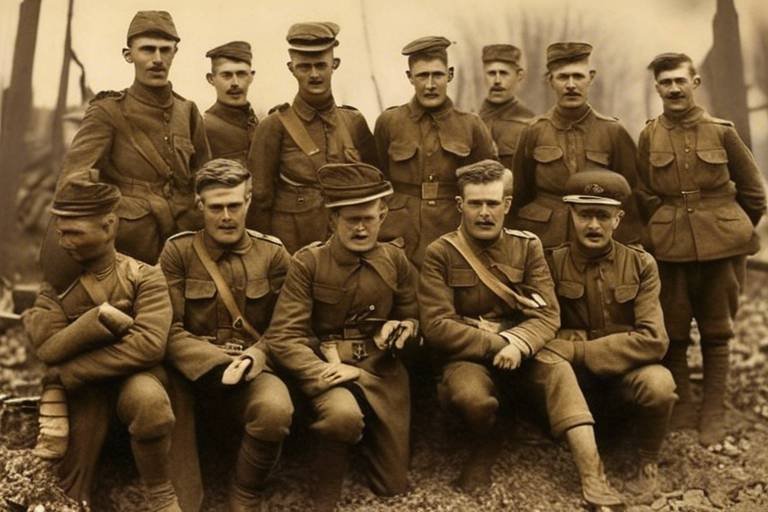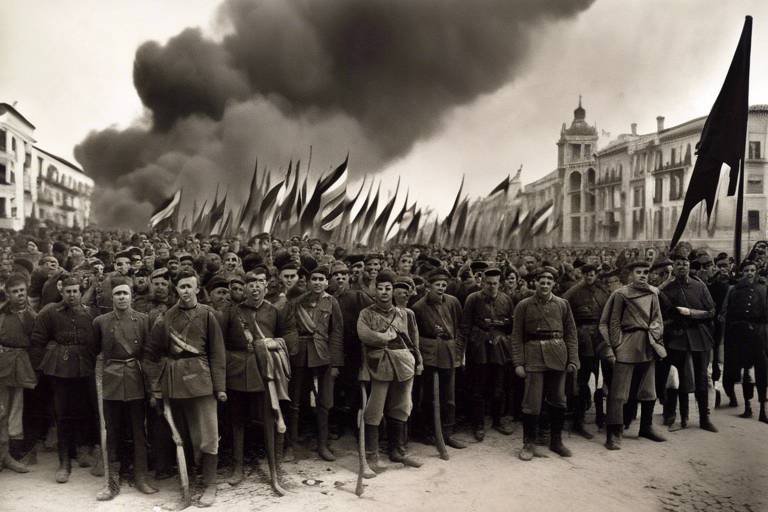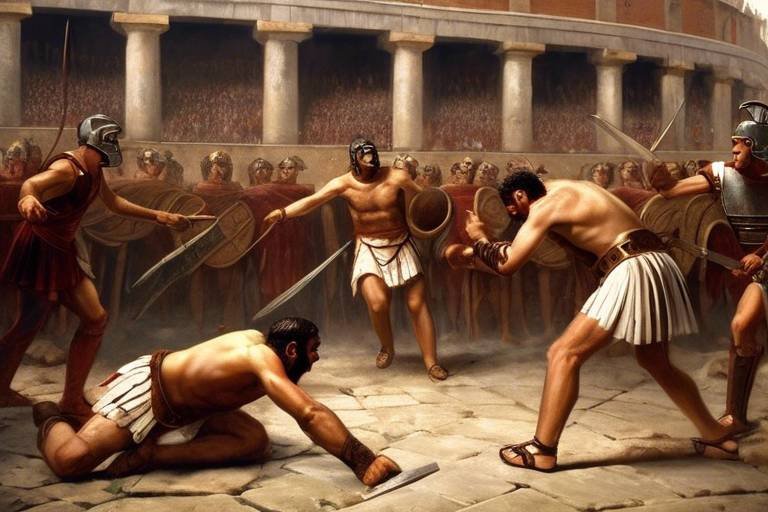The Role of Propaganda in World War I
Propaganda played a pivotal role in shaping the course of World War I, serving as a potent weapon wielded by governments and organizations to influence public opinion, recruit soldiers, and vilify the enemy. It was a time when information became a powerful tool in the hands of those seeking to control narratives and sway the masses towards their agenda.
During World War I, propaganda was not merely about spreading information but also about manipulating emotions, instilling patriotism, and fostering a sense of duty among civilians and military personnel alike. It was a time when the lines between truth and falsehood blurred, and the art of persuasion reached new heights through the strategic use of propaganda techniques.
From visually striking poster campaigns that stirred strong emotions to media manipulation through newspapers, radio broadcasts, and films, propaganda permeated every aspect of wartime society. It was a time when the power of images and words was harnessed to evoke fear, pride, and a sense of righteousness in the hearts of individuals.
Recruitment efforts were bolstered by propaganda that glorified military service, painted the enemy as a monstrous threat, and appealed to nationalistic fervor. Through iconic recruitment posters that depicted soldiers as heroes and emphasized honor and duty, young men were inspired to enlist, driven by a sense of duty to their country.
One of the darker aspects of wartime propaganda was the dehumanization of the enemy, achieved through caricatures, stereotypes, and fabricated narratives. By stripping the enemy of their humanity and portraying them as subhuman creatures, propaganda justified unspeakable atrocities and rallied support for the war effort.
The impact of propaganda on public opinion cannot be overstated, as it not only shaped perceptions but also fostered national unity and a sense of moral superiority among wartime societies. It was a time when information became a weapon, and the ability to control narratives became a decisive factor in the outcome of the war.

Definition of Propaganda
Exploring how propaganda was used as a powerful tool during World War I to shape public opinion, recruit soldiers, and demonize the enemy, ultimately influencing the outcome of the war.
Understanding the concept of propaganda and how it was employed by governments and organizations to disseminate information or misinformation to manipulate public perception.
Examining various propaganda techniques such as emotional appeals, demonization, half-truths, and patriotic symbols used to sway public opinion towards supporting the war effort.
Analyzing the impact of visually striking posters designed to evoke strong emotions, patriotism, and a sense of duty among civilians and soldiers.
Investigating how newspapers, radio broadcasts, and films were utilized to control the narrative, spread propaganda, and suppress dissenting voices during the war.
Discussing how propaganda was instrumental in recruiting soldiers by glorifying military service, demonizing the enemy, and appealing to nationalistic sentiments.
Exploring the iconic recruitment posters that portrayed soldiers as heroes, emphasized duty and honor, and encouraged men to enlist in the armed forces.
Examining how propaganda dehumanized the enemy through caricatures, stereotypes, and false narratives to justify war atrocities and rally support for the war effort.
Analyzing the profound influence of propaganda on shaping public opinion, fostering national unity, and creating a sense of moral superiority among wartime societies.

Types of Propaganda Techniques
Exploring how propaganda was used as a powerful tool during World War I to shape public opinion, recruit soldiers, and demonize the enemy, ultimately influencing the outcome of the war.
Understanding the concept of propaganda and how it was employed by governments and organizations to disseminate information or misinformation to manipulate public perception.
Propaganda techniques encompass a variety of strategies used to influence public opinion towards a specific agenda. These techniques are carefully crafted to evoke emotional responses, shape beliefs, and drive action. By employing various tactics, propaganda aims to sway individuals towards supporting a particular cause or viewpoint.
Within the realm of propaganda, different techniques are utilized to achieve distinct objectives. Emotional appeals, for instance, target the audience's feelings to generate sympathy, fear, or excitement. By tapping into emotions, propagandists can establish a strong connection with the audience, making them more receptive to the intended message.
Demonization is another prevalent technique where the enemy is portrayed in a negative light, often exaggerating their faults or crimes. This strategy aims to create a sense of fear or hatred towards the opposition, rallying support for the war effort or a specific ideology.
Half-truths, a deceptive tactic, involve presenting partial information or twisting facts to manipulate perceptions. By selectively disclosing details, propagandists can shape the narrative in their favor, obscuring the full picture from the public.
Patriotic symbols play a crucial role in propaganda, invoking national pride and unity among the populace. By associating the cause with familiar symbols or imagery, propagandists instill a sense of loyalty and duty in individuals, fostering support for the desired outcome.
Poster campaigns during World War I were instrumental in conveying propaganda messages to the masses. These visually striking posters utilized powerful imagery, slogans, and symbols to evoke strong emotions, patriotism, and a sense of duty among civilians and soldiers. Through compelling visuals and persuasive language, posters played a significant role in shaping public opinion and garnering support for the war effort.
The manipulation of media channels such as newspapers, radio broadcasts, and films was a key component of wartime propaganda efforts. By controlling the narrative, disseminating propaganda, and silencing dissenting voices, governments and organizations sought to sway public opinion in their favor. Through strategic media manipulation, propagandists could effectively shape perceptions, influence attitudes, and maintain societal cohesion during times of conflict.
Discussing how propaganda was instrumental in recruiting soldiers by glorifying military service, demonizing the enemy, and appealing to nationalistic sentiments.
Exploring the iconic recruitment posters that portrayed soldiers as heroes, emphasized duty and honor, and encouraged men to enlist in the armed forces.
Examining how propaganda dehumanized the enemy through caricatures, stereotypes, and false narratives to justify war atrocities and rally support for the war effort.
Analyzing the profound influence of propaganda on shaping public opinion, fostering national unity, and creating a sense of moral superiority among wartime societies.

Poster Campaigns
During World War I, poster campaigns played a pivotal role in shaping public opinion and rallying support for the war effort. These visually striking posters were designed to evoke strong emotions, patriotism, and a sense of duty among civilians and soldiers alike. With bold colors, powerful imagery, and succinct messaging, these posters aimed to capture the attention of the viewer and convey a clear call to action.
One of the key objectives of poster campaigns was to instill a sense of national pride and unity, portraying the war as a noble cause worth fighting for. By depicting soldiers as heroes and emphasizing concepts of duty and honor, these posters sought to inspire individuals to contribute to the war effort in any way they could, whether through enlisting in the military or supporting the troops on the home front.
Additionally, poster campaigns were used to demonize the enemy and create a sense of urgency and fear among the population. Through the use of propaganda techniques such as exaggeration and caricatures, the enemy was depicted as a monstrous threat that needed to be defeated at all costs. By dehumanizing the enemy, these posters aimed to justify the sacrifices being made during the war and garner unwavering support for the military campaign.
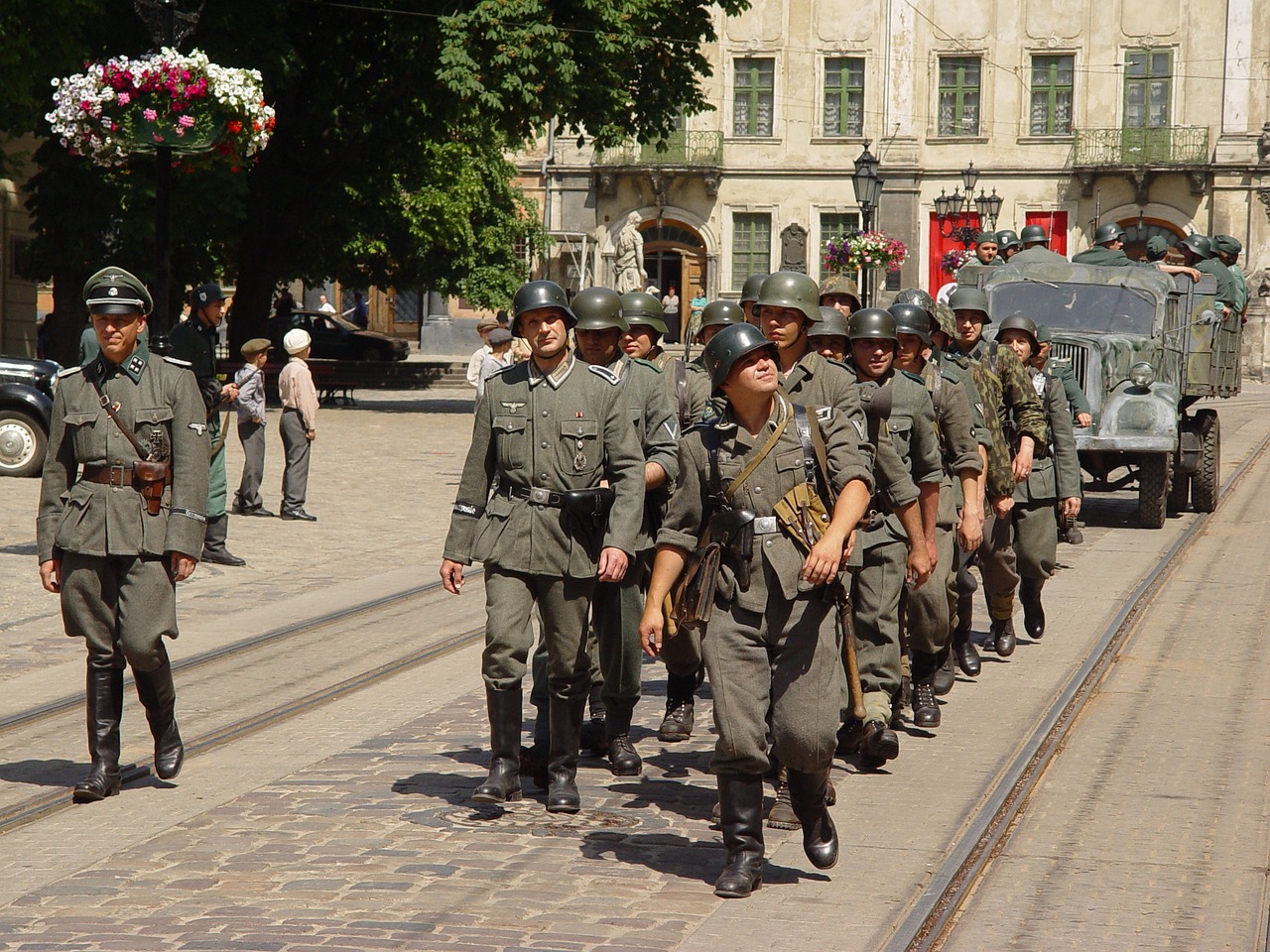
Media Manipulation
During World War I, media manipulation played a crucial role in shaping public perception and controlling the narrative. Governments and organizations strategically used newspapers, radio broadcasts, and films as powerful tools to disseminate propaganda and suppress dissenting voices. By controlling the flow of information and manipulating news content, they aimed to sway public opinion in favor of the war effort and maintain morale on the home front.

Role of Propaganda in Recruitment
During World War I, propaganda played a crucial role in recruitment efforts, shaping the perceptions of individuals and influencing their decisions to join the armed forces. Governments and organizations strategically utilized propaganda to glorify military service, demonize the enemy, and appeal to nationalistic sentiments, all in an effort to boost recruitment numbers and strengthen their military forces.
One of the most impactful forms of propaganda in recruitment was the creation of iconic recruitment posters. These posters depicted soldiers as heroes, emphasizing notions of duty, honor, and patriotism. Through powerful imagery and persuasive slogans, recruitment posters aimed to evoke strong emotions and instill a sense of pride and obligation in men to enlist in the military.
Furthermore, propaganda in recruitment campaigns often portrayed the enemy in a negative light, dehumanizing them through caricatures, stereotypes, and false narratives. By painting the enemy as a threat to national security and values, propaganda aimed to justify the need for individuals to join the war effort and defend their country against perceived dangers.
Overall, the role of propaganda in recruitment during World War I was instrumental in shaping public perception, influencing individuals to enlist in the armed forces, and fostering a sense of unity and purpose among wartime societies. Through strategic messaging and emotional appeals, propaganda effectively mobilized individuals to support the war effort and contribute to the military cause.

Recruitment Posters
Recruitment posters played a crucial role in shaping public perception and encouraging enlistment during World War I. These posters were meticulously designed to evoke strong emotions, patriotism, and a sense of duty among civilians and soldiers alike. By portraying soldiers as heroes and emphasizing values such as duty and honor, recruitment posters aimed to inspire men to enlist in the armed forces and contribute to the war effort.

Dehumanization of the Enemy
During World War I, propaganda played a pivotal role in dehumanizing the enemy to justify the brutalities of war and garner support for the conflict. Through the use of caricatures, stereotypes, and false narratives, propaganda sought to portray the opposing forces as subhuman, evil, and unworthy of empathy or compassion. By stripping away the humanity of the enemy, propaganda aimed to instill fear, hatred, and a sense of moral superiority among the wartime societies.
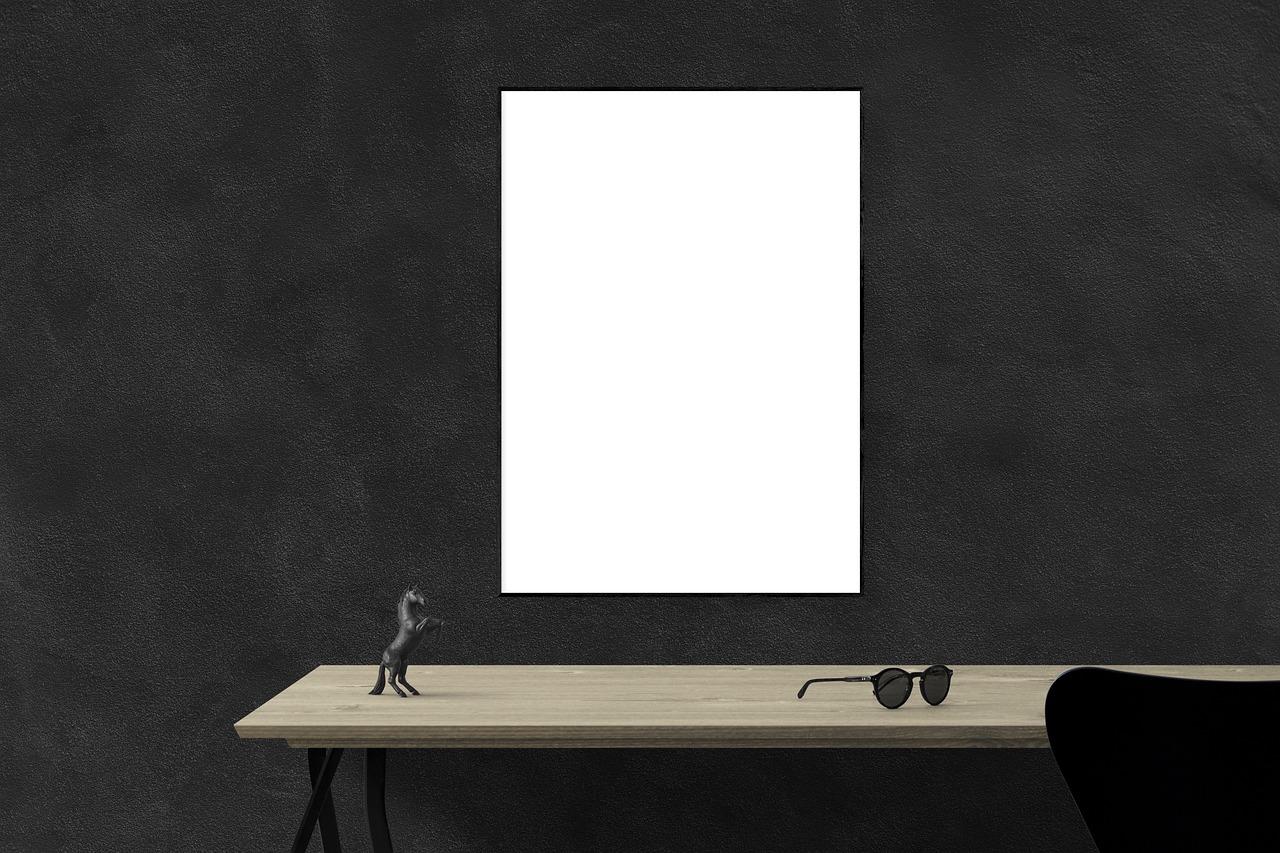
Impact on Public Opinion
Propaganda during World War I had a profound impact on public opinion, shaping the beliefs and attitudes of entire societies. The relentless dissemination of propaganda messages through various mediums such as posters, newspapers, and films played a crucial role in influencing how people perceived the war, the enemy, and their own national identity. By strategically manipulating emotions, instilling fear, and appealing to patriotic sentiments, propaganda effectively swayed public opinion towards supporting the war effort.
Frequently Asked Questions
- What is propaganda?
Propaganda is a form of communication aimed at influencing the attitude of a community toward some cause or position by presenting only one side of an argument. It is often used to manipulate public opinion and shape perceptions.
- How was propaganda used during World War I?
Propaganda played a crucial role in World War I by promoting patriotism, demonizing the enemy, and recruiting soldiers. Governments and organizations utilized various techniques such as posters, media manipulation, and dehumanization to sway public opinion in support of the war effort.
- What were the common propaganda techniques employed during World War I?
Some common propaganda techniques used during World War I included emotional appeals, demonization of the enemy, spreading half-truths, and using patriotic symbols to evoke strong emotions and garner support for the war. These techniques were designed to influence public perception and justify wartime actions.
- How did propaganda impact public opinion during World War I?
Propaganda had a significant impact on shaping public opinion during World War I by fostering national unity, creating a sense of moral superiority, and justifying wartime actions. It influenced how people viewed the enemy, the war effort, and their own roles in the conflict.

